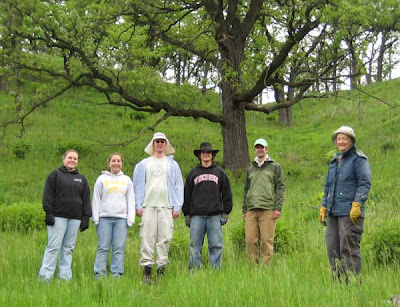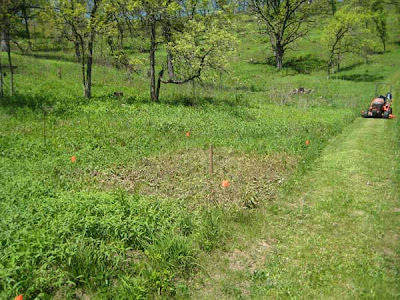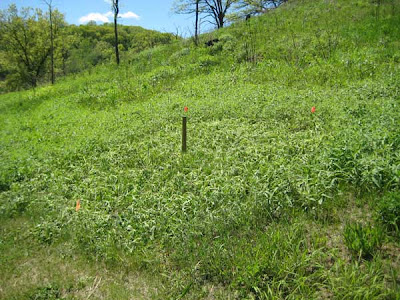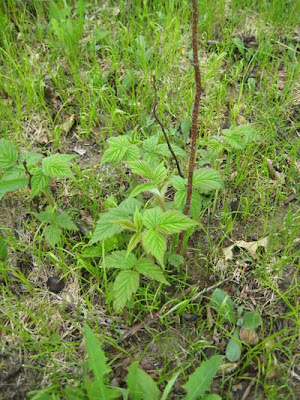Today Kathie and I attended an event at the Nature Conservancy's Spring Green Preserve, to recognize our contribution to a new acquisition and to see the preserve in its early spring glory.
Our donation to the Prairie Enthusiasts of land and a conservation easement from Pleasant Valley Conservancy helped to trigger a complicated land acquisition procedure involving the State Stewardship Fund, which made it possible for TNC to purchase a critical parcel at its Spring Green Preserve. Our recognition was part of a brief ceremony before a morning field trip to the preserve.
Spring Green Preserve is an extensive sand prairie north of the Wisconsin River. The steep south-facing ridge turns into a veritable desert in mid-summer, creating a unique habitat. It has in profusion a number of plant and animal species that are seen rarely at other places. The Nature Conservancy now owns over 1000 acres here, and has done great work to preserve and restore it. The new parcel acquired partly as a result of our donation was a critical piece that brought the preserve land all the way to Wisconsin Highway 23, thus providing excellent access for management activities on the west end of the preserve.
The blue haze we saw across the preserve was due to thousands of bird's foot violet plants in full bloom. The 0.2 acre patch of this species we have at Pleasant Valley is only a tiny speck alongside the Spring Green profusions. The trail we walked on went right through the middle of the violets. Quite a show!


Bird's foot violet (
Viola pedata) is one of two "prairie" violets that are found in Wisconsin dry mesic prairies. The other is prairie violet (
Viola pedatifida). Spring Green has both, but
pedata predominates. Superficially, they are alike, but
pedata is the one that is generally found in large patches.

Another species in bloom at Spring Green was dwarf false dandelion,
Krigia virginiana. This is also a plant of dry sand prairies, and is locally abundant in southwestern Wisconsin. The cactus shown in the photo is another species, also characteristic of sand prairies.
















